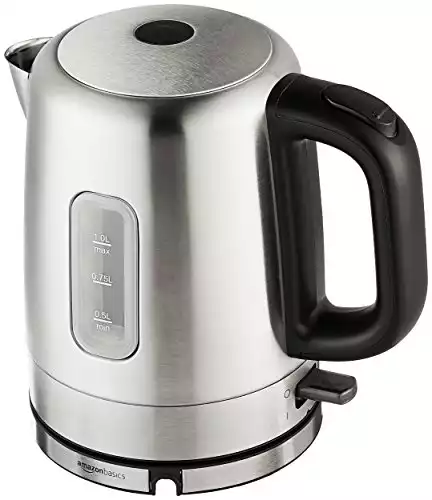Are you curious why do electric kettles have a minimum water level? Read more to find out.
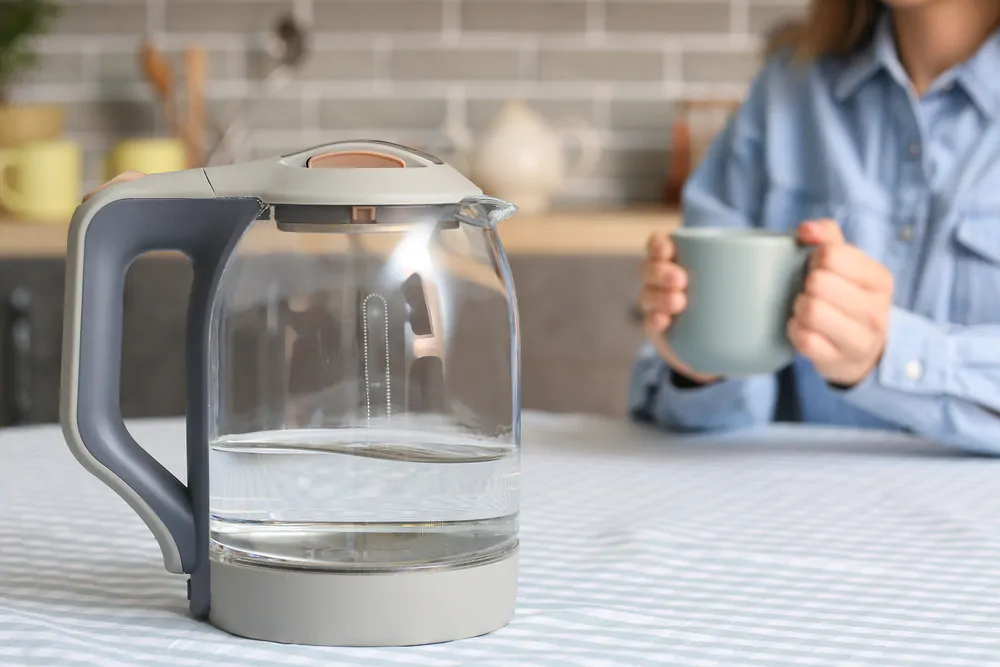
A vivid memory I have of whenever I visit my grandmother is her kettle whistling, the sound echoing throughout the house and calling everyone’s attention. When I became older and had a job, the first gift I gave her was an electric kettle that wouldn’t disturb her siesta.
An electric kettle is relatively easy to use, as its steps are not so different from that of a traditional kettle. However, when I was filling my grandma’s electric kettle, I suddenly thought about why there’s a minimum water level requirement.
A Brief History
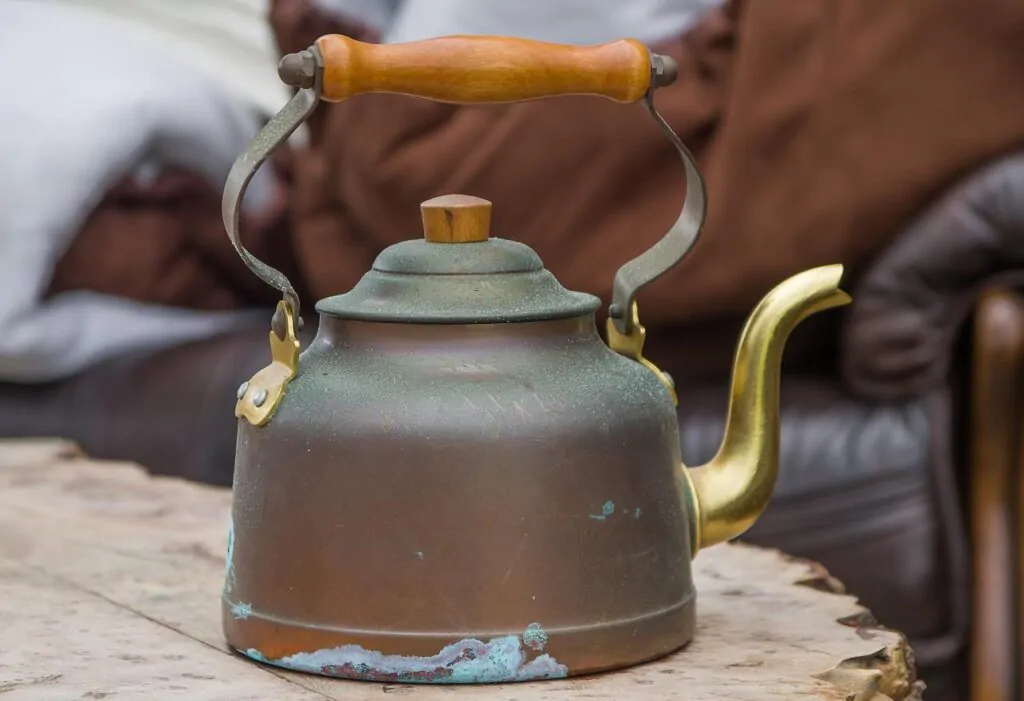
Archeologists discovered the first water heating vessel in Mesopotamia. It is a bronze kettle believed to be from 3000 BC. Then the British copper tea kettle in the mid-18th century turned into the whistling kettle in the 19th century.
Now, there are two types of kettles: stovetop and electric.
An electric kettle is a water container with a metal heating element that turns electrical energy into heat once it’s plugged into an electrical outlet. Companies from the U.S. and U.K. launched their models in the 1890s, but both kettles took ten minutes to boil water because the heating element was in a separate compartment.
A German company launched a stylish electric kettle made of nickel-plated brass with a rattan handle in 1909. However, this model still had a separate heating element. Then in 1922, Arthur Leslie Large invented the swan kettle with the submersible electric heating element, which became the standard for all the electric kettles produced globally.
You might also find our explainers on are electric kettles safe and why do electric kettles leak helpful.
Why Do Electric Kettles Have A Minimum Water Level?
Due to continuous developments in technology, many of today’s kettles have different features and designs, making the kettle stylish, easier to clean, and more convenient. One of the new developments is the cordless electric kettle.
But even with the many changes to its components and design, it will not lose the minimum and maximum water level written on the electric kettle.
For example, an electric kettle with a 1L capacity like Amazon Basic’s Portable Electric Hot Water Kettle requires a 0.5L minimum water level. These water level marks are a recommendation from the manufacturer for the correct and safe use of the electric kettle to avoid the following:
- Electric water kettle with 1.0-liter capacity and 1500 watts of power for fast results (120V-60Hz)
- Cordless design allows for easy filling and serving; Power base with 30-inch power cord for flexible placement, plus cord wrap for compact storage
- Concealed heating element; BPA-free food-contact materials; Removable filter for easy cleaning
- Automatic shutoff with boil-dry protection for safety and peace of mind; Water window for precise filling and checking levels at a glance
Overheating
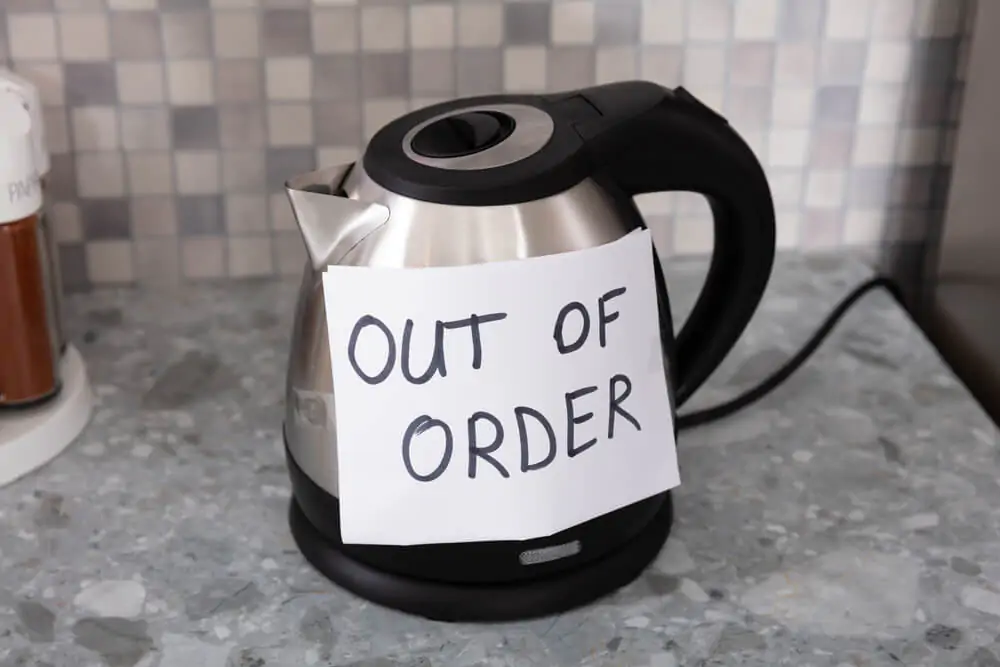
A liter of hot water is too much to make your cup of Joe. Especially if you’re only making one serving, you can just put whatever amount of water you want in the electric kettle, right? Wrong.
You should always fill up your kettle above the minimum level. It’s to prevent any issue that can damage your kettle or hurt yourself. If there’s not enough water to cover the entire plate or heating element at the bottom of the kettle, it can lead to overheating.
Overheating can damage the kettle, plastic, and metal components like copper wires. If the electric kettle’s coil builds up too much heat, this can break the coil and create electrical problems.
Rapid Deterioration
The electric kettle will not last long even if you cover its coil or bottom plate, but the water doesn’t reach the minimum waterline. If you boil water enough for a cup of coffee, the coil will be overstressed because of all the heat from the metal components before it automatically turns off.
Once the metal components are overheated, they will deteriorate fast, and black films will be present in your coffee. Boiling water from a kettle with damaged and decaying metal components is detrimental to your health and can also make the kettle explode.
Thermostat Issues
Electric kettles automatically turn off through thermostats – the device that regulates temperature in an electric kettle. If the steam from the boiling water doesn’t reach the top, it may not turn off automatically.
If you miss checking the water level and leave it to boil without water in it, it can lead to electrical hazards and cause a fire. Too much water can also cover the thermostat sensor and melt the plastics in your kettle. These plastic components are toxic chemicals that can affect your health.
Overflow
The bubbles you see in boiling water are the molecules that vibrate due to the kinetic energy from the heating element inside the kettle—filling up the kettle until the recommended water line level makes enough room for these particles to avoid overflowing.
If water gets the wirings wet in a plugged-in electric kettle, it can electrocute you and cause a fire.
High Electrical Consumption
A kettle boils water for two to three minutes and uses the same energy as eight minutes of microwaving and 80 minutes of using a laptop. Too much water in the kettle will require it to boil for longer, increasing your electric bill.
The faster the water boils, the less electricity it’ll consume.
Coffee Brewing With An Electric Kettle
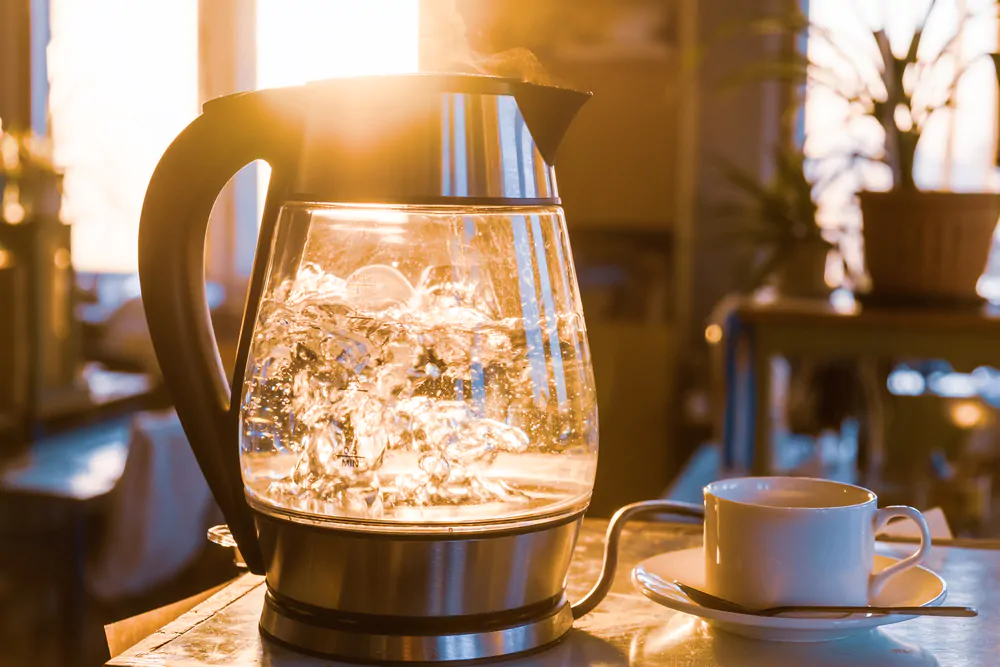
The electric kettle is not only for boiling water. It can also be for hot soups, instant noodles, and oatmeal.
There are many brewing methods and machines you can use in making coffee. However, they can be expensive and complicated to use unless you know how to.
If you are looking for a way to brew coffee using an electric kettle, use the pour-over method. As the name suggests, this is a method that involves pouring hot water on coffee grounds in a filter placed in a glass or ceramic dipper.
Ingredients:
- Coffee grounds
- Glass or ceramic dipper
- Filter
- Electric kettle
- Milk and sugar to taste
Method:
- Fill up the electric kettle with the right amount of water and boil.
- Grind the beans if it’s still not in the medium grind.
- Place the filter into the dipper.
- Add the grounds to your dipper and gently pour the hot water in circular motions.
- Add milk and sugar to get your desired taste.
Are you wondering what electric kettle you should get? Check out What’s the Best Electric Kettle for Your Home Kitchen.
FAQs About Kettles’ Minimum Water Level
Why Is The Water Level Below The Brim Of The Kettle?
The maximum and minimum water level is designed to avoid under and overfilling. Filling your electric kettle below the minimum water level can cause overheating and other electrical issues. Meanwhile, putting more than the maximum line will not leave any space for the bubbles, making the kettle overflow.
How Much Should You Fill A Kettle?
For a 1L electric kettle, fill from 0.5L to 0.75L. Boiling too much water will take longer and higher energy consumption.
How Much Water Does An Electric Kettle Hold?
There are various sizes for each electric kettle. The most common capacity for an electric kettle is 1L of water. But there are also below 1L and above 1.5L electric kettles available in stores and online.
Does Water From A Kettle Reach 100°C?
Boiling water in an electric kettle can go above 100°C (212°F.) Minerals and other particles can cause a higher boiling temperature.
